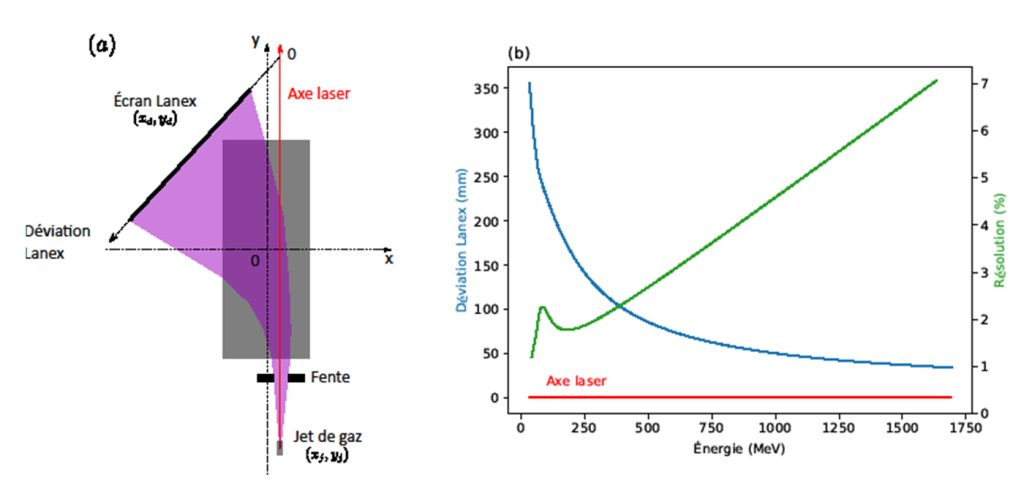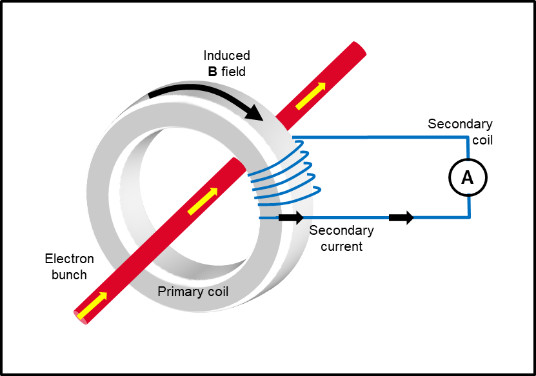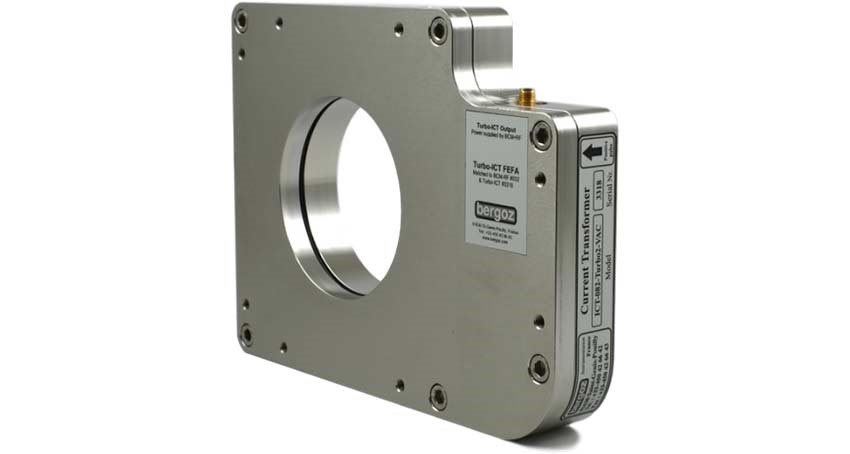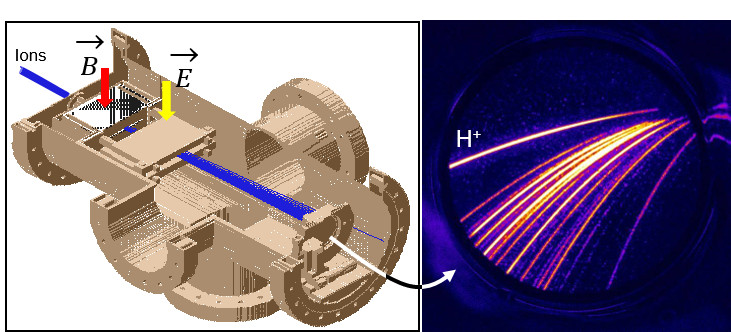Magnetic spectrometer
The electron spectrometer measures the energy distribution of electron beams produced on the platform. This enables us to observe the deviation of the electrons (xd, yd) by the magnet’s magnetic field from an undeviated trajectory.
The latter is defined by the position of the laser beam path in the plane of a Kodak Lanex screen.
Deviation from this point then allows us to trace the energy of these electrons: the more energetic an electron, the less it is deviated, and vice versa.

ICT
An ICT (or Integrating Current Transformer) is a passive, non-destructive diagnostic device designed to measure the charges of ultra-short electron packets with great precision, such as those generated by laser-plasma gas pedals.
Its operation is based on the principle of induced currents generated by the passage of charged particles through a transformer-like structure.
When a high-energy electron beam passes through the ICT, it induces a time-varying magnetic field in the transformer’s primary coil due to the movement of the charged particles.
A set of secondary coils detect the induced voltage, which is proportional to the time derivative of the beam current. This is then precisely integrated to recover the total charge of the electron beam.


Operating principle of an ICT (left) and the Turbo-ICT VAC (Bergoz) we use on the UHI100 platform (right)
Nomarski interferometer
The optical diagnostic used to measure experimental electron density is a Nomarski interferometer. This choice was made because this type of interferometer is robust and easy to align.
A probe beam, synchronized in time and space with the main beam (creation of the plasma whose electron density we want to probe), will pass through the plasma, then a Wollaston prism, which will angularly separate the beam into two according to its polarization (ordinary or extraordinary) by an angle α depending on the prism.
The polarizer and analyzer influence the polarization projection of each beam to enable interference.
An essential parameter of this device is the overlap area of the ordinary and extraordinary beams.
In order to recover the phase shift induced by the plasma, the beam is positioned so that only half the beam passes through the plasma.
The information on the phase shift resulting from the plasma crossing is then direct, as part of a beam containing the phase shift information interferes with part of the other beam not containing it. By measuring the phase shift, we can then reconstruct a two-dimensional map of the electron density using the Abel inversion technique.

Thomson parabola
The Thomson Parabola Spectrometer (TPS) is an indispensable diagnostic tool for studying and optimizing ion acceleration in laser-plasma experiments, providing information on the ionic species involved, their charge state and energy distribution.
Its operating principle is based on the simultaneous application of an electric field and a magnetic field, enabling charged particles to be separated according to their mass-to-charge ratio and energy. This generates distinct parabolic trajectories when the particles reach a detection screen
detection screen (in our case, a phosphorescent screen coupled to a pair of microchannel wafers (MCP)), enabling information on particle energy and charge states to be recorded in real time with each laser shot.
On the UHI100 platform, we have different types of TPS, designed for use inside or outside the vacuum chamber where the laser interacts with the solid target, to meet all experimental requirements.

Operating principle of a TPS (left) and parabolic traces of the various accelerated ions recorded on the detector (phosphor screen coupled to MCPs) (right)
XUV, IR spectrometer



